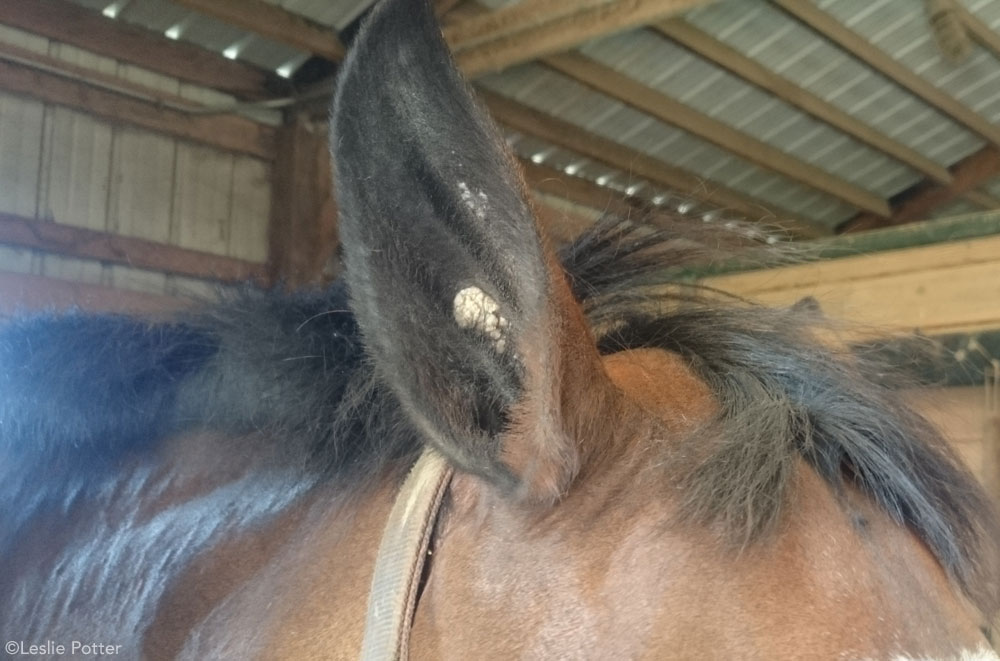
A: What you’re describing sounds like aural plaques (“aural” referring to the ear, and “plaque” describing whitish, flaky lesions on the inside of the ear). They are thought to be the body’s chronic, inflammatory response to a papilloma viral infection (similar to warts) spread by biting insects.
Aural plaques can be a purely cosmetic problem—like in your case—or cause severe ear sensitivity. It’s not exactly known what aspect of this condition specifically makes the ears sensitive to grooming, haltering, bridling and other common handling procedures.
Generally, veterinarians recommend not treating aural plaques since repeated handling of the ears seems to inflame the area and sensitize the horse. Despite this, some owners have reported success with various ointments, especially those containing steroids or other anti-inflammatory agents.
Scrubbing or scraping should be avoided, however. A fly mask with ears is the best protection against new fly bites or irritation from flies. Horses that have become ear or head shy due to these plaques or their treatment may need specific training to condition them to accept ear and head handling.
A study on a new ointment showed that it appears to resolve the plaques inside the ear. Unfortunately, the treatment is expensive and painful, with most horses requiring sedation. But for horses and owners that have been dealing with problematic aural plaques for a long time, it may provide relief.
If you haven’t already asked your vet to look at these plaques, get him or her involved to confirm the diagnosis and rule out a more serious problem such as sarcoids or sarcoma. Your vet will also be your best resource in deciding whether to address the aural plaques or leave them alone, as has been suggested. If it ain’t broke, don’t fix it!







